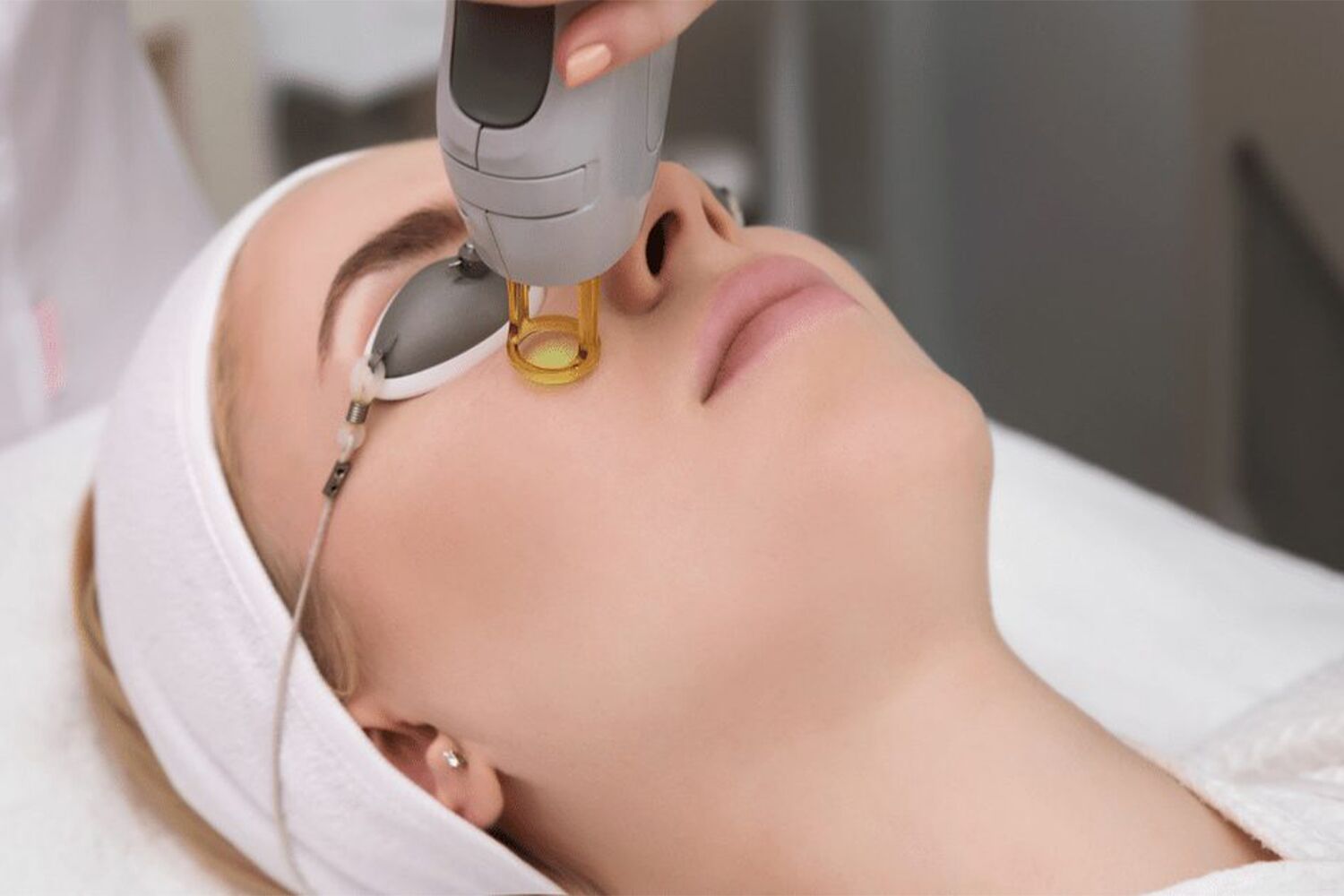In the realm of modern medicine, the healing power of light is taking center stage. Laser therapy, often referred to as low-level laser therapy (LLLT) or photobiomodulation therapy, has emerged as a promising and non-invasive treatment modality for a wide range of medical conditions. This article delves into the science behind laser therapy, exploring its mechanisms, applications, and the transformative potential it holds in healthcare.
Illuminating the Path: Understanding Laser Therapy
Before we delve into the intricacies of laser therapy, let’s establish a foundational understanding of this remarkable treatment.
1. The Essence of Photobiomodulation
At the heart of photobiomodulation laser therapy lies photobiomodulation—a process where specific wavelengths of light interact with cellular components, initiating a cascade of biochemical responses. This gentle and non-invasive therapy is often referred to as “low-level” laser therapy because it uses low-energy lasers or light-emitting diodes (LEDs).
2. The Mighty Mitochondria
Within our cells, the mitochondria serve as the powerhouses responsible for generating adenosine triphosphate (ATP), the cellular energy currency. During a laser therapy session, the emitted light penetrates the skin and is absorbed by these microscopic energy factories.
3. Enhancing ATP Production
The absorbed light energy acts as a catalyst, supercharging mitochondrial function and leading to increased ATP production. ATP, in turn, fuels various cellular processes, including tissue repair, regeneration, and overall metabolism.
4. The Dance of Blood Vessels
Laser therapy has another magical trick up its sleeve—it promotes vasodilation, the widening of blood vessels. This results in enhanced blood flow to the treated area, bringing vital oxygen, nutrients, and immune cells necessary for tissue healing.
5. Taming Inflammation
One of laser therapy’s enchanting powers is its anti-inflammatory effect. It reduces the release of pro-inflammatory molecules while stimulating the production of anti-inflammatory substances, ultimately soothing inflammation and pain.
6. Fostering Cellular Repair and Regeneration
The combined effects of heightened ATP production, increased blood flow, and reduced inflammation create an optimal environment for tissue repair and regeneration. This is particularly valuable in addressing various medical conditions and accelerating the body’s natural healing processes.
The Healing Light in Action
Now that we understand the fundamentals, let’s explore the diverse applications of laser therapy across the spectrum of healthcare.
1. Pain Management and Relief
Laser therapy is a beacon of hope for individuals grappling with pain. Whether it’s chronic pain conditions like arthritis, musculoskeletal injuries, or post-surgical discomfort, laser therapy provides non-pharmacological and non-invasive pain relief. It reduces pain, promotes tissue healing, and enhances overall comfort.
2. Musculoskeletal Health
Musculoskeletal health is essential for an active and pain-free life. Laser therapy has found its place in rehabilitation, sports medicine, and chronic pain management. It facilitates recovery from injuries, promotes joint health, and enhances mobility, contributing to an improved quality of life.
3. Dermatological Marvels
The skin, being the body’s largest organ, deserves special attention. Laser therapy is harnessed in dermatology to address various skin concerns, including acne, scars, psoriasis, and vitiligo. It also serves cosmetic purposes, such as skin rejuvenation and hair removal, helping individuals feel more confident in their skin.
4. Dentistry and Oral Health
Oral health is integral to overall well-being. Laser therapy is embraced in dentistry for gum disease treatment, oral surgeries, and pain management. It minimizes post-operative discomfort and fosters faster healing, ensuring oral wellness.
5. Ophthalmic Miracles
Good vision is a gift, and laser therapy plays a role in preserving it. Ophthalmic procedures, such as LASIK surgery for vision correction, cataract surgery, and the treatment of eye conditions like glaucoma and retinal disorders, benefit from laser therapy to ensure optimal eye health.
6. Psychological Well-Being
While research in this area is ongoing, some studies suggest that laser therapy may have a positive impact on mood and mental health. This opens doors to innovative wellness interventions that address the mind-body connection, offering a holistic approach to well-being.
Advantages of Laser Therapy
Laser therapy offers a host of advantages that make it an attractive treatment option.
1. Non-Invasive and Painless
Laser therapy is entirely non-invasive, sparing patients from surgical incisions or injections. Most individuals experience no pain during treatment, ensuring a comfortable and pleasant experience.
2. Minimal Side Effects
Unlike many pharmaceutical treatments, laser therapy has minimal side effects. Patients are not subjected to the gastrointestinal issues, drowsiness, or dependency often associated with long-term medication use.
3. Accelerated Healing
Laser therapy accelerates the body’s natural healing processes. This means less time spent in discomfort and more time enjoying an active and pain-free life.
4. Versatile and Comprehensive
Laser therapy is a versatile tool that can be applied to various medical conditions and specialties. Its broad range of applications makes it a valuable addition to the medical toolkit, addressing a wide spectrum of patient needs.
5. Reduced Reliance on Medication
By incorporating laser therapy into treatment protocols, patients can reduce their reliance on pain medications, minimizing potential side effects and dependency. It offers a drug-free alternative for pain relief and management.
The Future of Healing Light
As we gaze into the future of healthcare, laser therapy stands as a guiding light, illuminating the path to more effective and patient-centric care.
1. Precision and Targeted Therapy
Ongoing research aims to enhance the precision of laser therapy by targeting specific tissues and structures with greater accuracy. This will enable more targeted and effective treatments, minimizing the impact on healthy tissues.
2. Personalized Treatment Plans
Advancements in laser technology may enable the development of personalized treatment plans tailored to an individual’s unique medical conditions and needs. This tailored approach can optimize treatment outcomes and overall well-being.
3. Non-Pharmacological Alternatives
In an era where concerns about the long-term use of medications are growing, laser therapy provides a valuable non-pharmacological alternative for addressing medical conditions and promoting healing.
4. Integrative Care
The future of healthcare is likely to embrace integrative approaches that combine laser therapy with other modalities, such as physical therapy, nutrition, and mindfulness practices. This holistic approach can provide comprehensive solutions for patients.
Conclusion: The Healing Light of Tomorrow
Laser therapy is not just a treatment; it is a journey into the future of healthcare. By harnessing the power of light to stimulate cellular responses, reduce inflammation, and accelerate tissue repair, it provides a non-invasive and versatile approach to healing.
As we move forward, laser therapy stands as a symbol of progress and innovation in healthcare. It promises a future where patients experience less pain, recover more rapidly, and enjoy a higher quality of life. In essence, laser therapy is not just a treatment; it is the healing light that guides us towards a brighter and healthier tomorrow.

